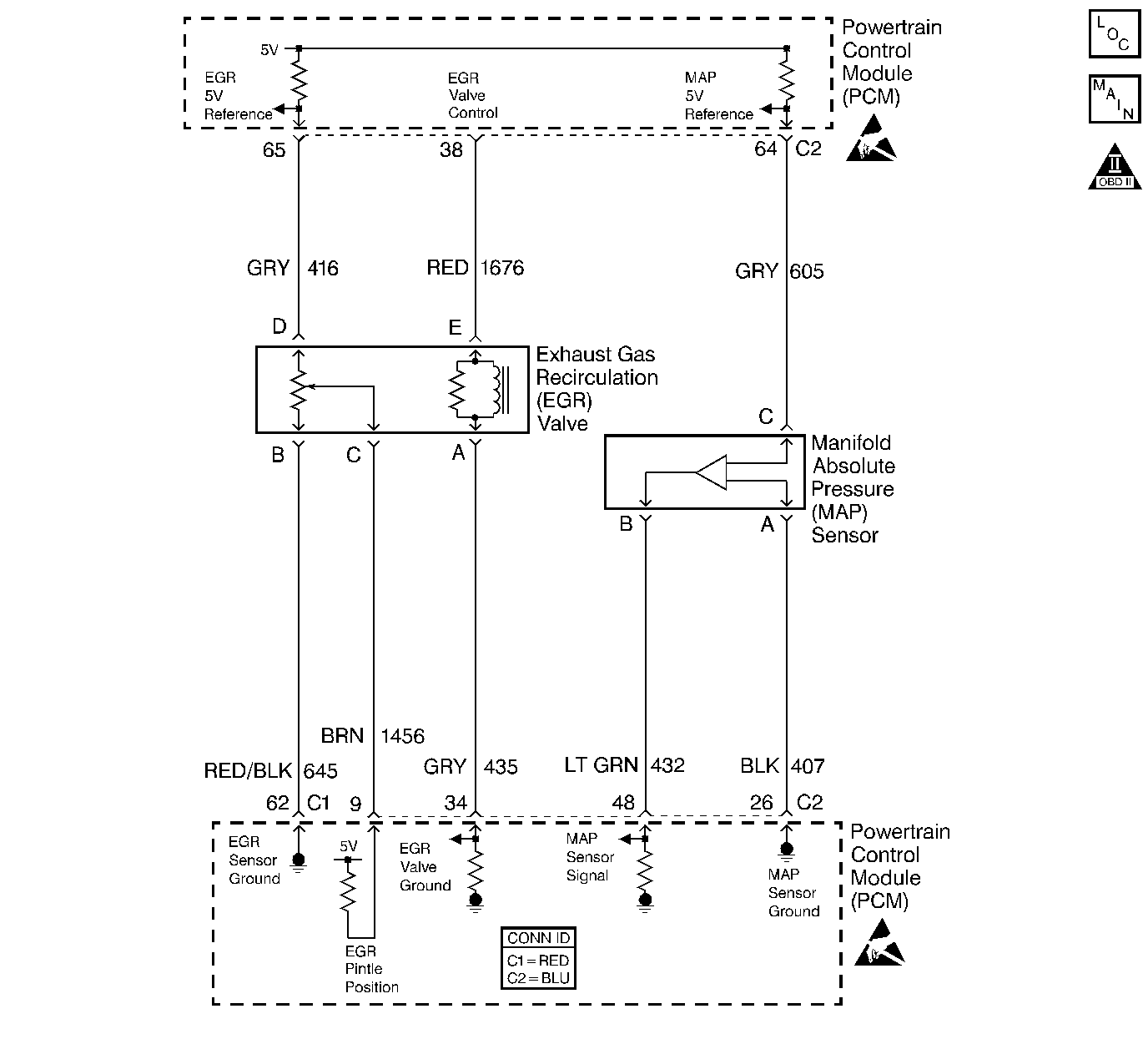
Circuit Description
The manifold absolute pressure (MAP) sensor measures the changes in the intake manifold pressure which result from engine load (intake manifold vacuum) and RPM changes; and converts these into a voltage output. The powertrain control module (PCM) sends a 5 volt reference voltage to the MAP sensor. As the manifold pressure changed, the output voltage of the sensor also changes. By monitoring the sensor output voltage, the powertrain control module (PCM) knows the manifold pressure. A lower pressure (low voltage) output voltage will be about 1-2 volts at idle. While higher pressure (high voltage) output voltage will be about 4.0-4.8 volts at wide open throttle (WOT). The MAP sensor is also used under certain conditions, to measure barometric pressure, allowing the PCM to make adjustments for different altitudes. The PCM uses the MAP sensor to control fuel delivery and ignition timing.
Test Description
The numbers below refer to the step numbers on the diagnostic table.
-
When comparing scan readings to a known good vehicle, it is important to compare vehicles that use a MAP to vehicles having the same MAP sensor.
-
Applying 34 kPa (10 in Hg) vacuum to the MAP sensor should cause the voltage to change. Subract the second reading from the first. Voltage value should be greater than 1.5 volts. Upon applying vacuum to the sensor, the change in voltage should be instantaneous. A slow voltage change indicates a faulty sensor.
-
Check the vacuum hose to the sensor for leaking or restriction. Be sure that no other vacuum devices are connected to the MAP hose.
-
Disconnect the sensor from the bracket. Hand twist the sensor to check for an intermittent connection. Output changes greater than 0.1 volt indicate a bad connector or connection. If the connection is OK, replace the sensor.
Step | Action | Value(s) | Yes | No |
|---|---|---|---|---|
1 | Was the On-Board Diagnostic (OBD) System Check performed? | -- | ||
2 |
Is DTC P0107, DTC P0108, or DTC P1107 set? | -- | Go to the applicable DTC table | |
Are the voltage readings within the specified range of each other? | 0.4-0.10 V | |||
4 | Replace the MAP sensor. Refer to Manifold Absolute Pressure Sensor Replacement . Is the action complete? | -- | -- | |
Is the difference in the voltage readings greater than the specified value? | 34 kPa (10 in Hg) 1.5 V | |||
Was a problem found? | -- | |||
Was a problem found? | 0.1 V | |||
8
| Operate the vehicle within the conditions under which the original symptom was noted. Does the system now operate properly? | -- | System OK |
